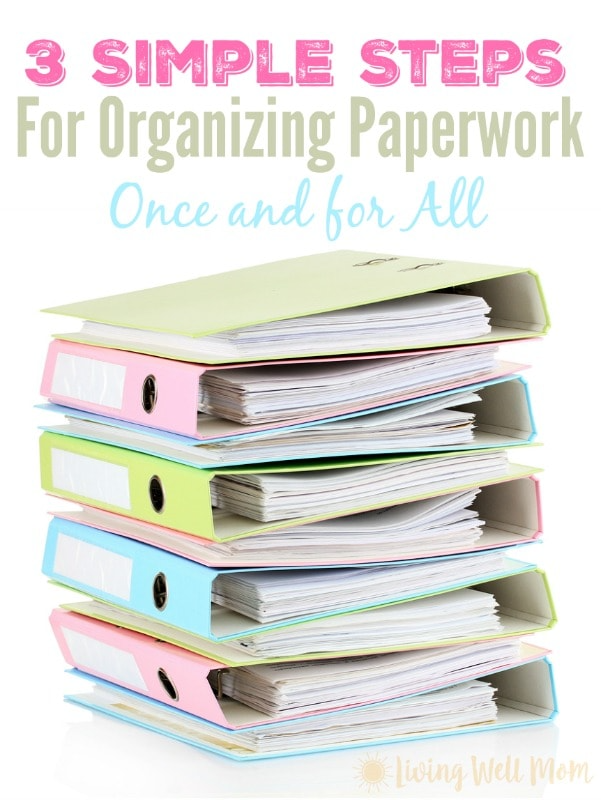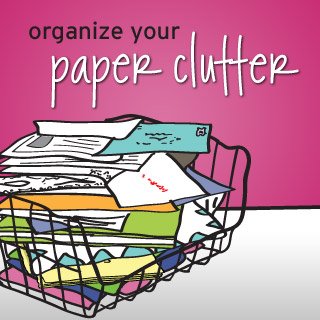7 Tips to Organize Paperwork Efficiently

The ever-growing pile of paperwork can be overwhelming in both personal and professional settings. Efficiently organizing this paperwork not only saves time but also reduces stress and enhances productivity. Here are seven practical tips to streamline your document management process.
1. Establish a Centralized Filing System

Start by creating a centralized location where all your documents can be stored. This could be a set of drawers or a cabinet designed specifically for this purpose. Here’s how to set it up:
- Label Clearly: Use clear, readable labels for each file section or drawer. Categories might include “Bills,” “Insurance,” “Tax Documents,” “Medical Records,” etc.
- Divide by Type: Group documents by type or purpose, making retrieval easier.
📂 Note: Keep your filing system simple and avoid overcomplicating it with too many subcategories which can make it hard to find documents quickly.
2. Use Color-Coding

Implement a color-coding system to visually differentiate between types of documents:
| Category | Color |
|---|---|
| Financial | Green |
| Personal | Blue |
| Work | Red |

Color-coding can significantly reduce the time spent searching through files.
3. Digitize Where Possible

Not all documents need to be kept in physical form. Here’s how to organize paperwork digitally:
- Scan Documents: Scan essential documents and store them in digital folders on your computer or cloud storage services.
- Regular Backups: Ensure regular backups of your digital documents to prevent data loss.
Scanned documents can be categorized similarly to physical files using folder structures.
4. Use the Rule of F.A.S.T.

The acronym F.A.S.T. stands for File, Act, Schedule, or Toss:
- File: Place documents that need to be kept.
- Act: Address documents requiring immediate action.
- Schedule: Set reminders or deadlines for documents that will need action later.
- Toss: Discard documents that are not needed.
5. Implement Time-Based Sorting

Sorting documents by time can help in managing upcoming deadlines or important dates:
- Use a Desk Calendar: Mark dates when bills are due or when documents need attention.
- Prioritize with Folders: Have folders labeled by months or weeks to keep upcoming tasks in sight.
6. Periodic Review and Declutter

Regularly review your filing system:
- Remove Unnecessary Papers: Annually or semi-annually, go through your files to shred or recycle outdated documents.
- Reorganize as Needed: Adjust your system based on changes in your life or work.
7. Train Family Members or Team Members

Ensure that everyone involved knows how to use the system:
- Teach the System: Give a brief tutorial on how the filing system works.
- Share Responsibilities: Delegate document-related tasks to keep the system running smoothly.
In implementing these strategies, you’ll find that managing your paperwork becomes a seamless and efficient task. Each tip not only helps in document organization but also ensures that your workspace remains clutter-free, fostering an environment conducive to productivity. Remember, the key to maintaining an organized system is consistency and periodic adjustments. By following these tips, you’ll transform the daunting task of paperwork management into a streamlined process, saving both time and reducing stress significantly.
How often should I review my paperwork?

+
It’s recommended to review your paperwork at least once every six months or whenever significant life changes occur, such as moving, getting a new job, or tax season.
What’s the best way to keep digital copies of important documents safe?

+
Utilize cloud storage services like Google Drive, Dropbox, or OneDrive which offer automatic backups. Also, ensure you have multiple copies of critical documents on different devices and in different locations.
Can I use these tips for both personal and work-related documents?

+
Yes, these tips are versatile and can be adapted for both personal and professional document organization. The key is consistency in maintaining the system across different areas of your life.
How do I decide which documents to shred?

+
Shred documents that contain personal or sensitive information which are no longer needed, like old bank statements, outdated insurance policies, or any document with your personal details.
Is there a simple way to teach my team these organizational techniques?

+
Create a manual or guideline detailing your filing system. Have a training session where you explain the system, demonstrate its use, and allow time for practice. Regular check-ins can help reinforce the training.